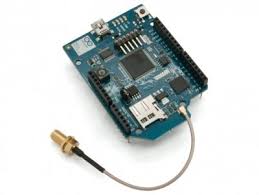Arduino Wifi Shield with Antenna Connector
Deliveries:
South Africa: Price: R115, 2-4 working days.
International: Contact us for a quote.
Collections:
No Charge - 3 Appian Place, 373 Kent Ave, Randburg Effortlessly bridge legacy and modern technologies with our DB9 to USB Connector, enabling seamless connectivity between serial devices and USB ports.
All items subject to manufacturer's warranty. Extended 12 month warranty available at 20% of purchase price. t&c apply
Arduino Wifi Shield with Antenna Connector
User-friendly Arduino WiFI Shield
The Arduino WiFi Shield allows an Arduino board to connect to the internet using the 802.11 wireless specification (WiFi). It is based on the HDG204 Wireless LAN 802.11b/g System in-Package. An Atmega 32UC3 provides a network (IP) stack capable of both TCP and UDP.
The WiFI shield connects to an Arduino board using long wire-wrap headers which extend through the shield. This keeps the pin layout intact and allows another shield to be stacked on top. There is an onboard micro-SD card slot, which can be used to store files for serving over the network. It is compatible with the Arduino Uno and Mega. The onboard microSD card reader is accessible through the SD Library.
Use the WiFI library (see below) to write sketches which connect to the internet using the shield. When working with this library, SS is on Pin 4. Arduino communicates with both the Wifi shield’s processor and SD card using the SPI bus (through the ICSP header). This is on digital pins 11, 12, and 13 on the Uno and pins 50, 51, and 52 on the Mega. On both boards, pin 10 is used to select the HDG204 and pin 4 for the SD card. These pins cannot be used for general I/O. On the Mega, the hardware SS pin, 53, is not used to select either the HDG204 or the SD card, but it must be kept as an output or the SPI interface won’t work. Digital pin 7 is used as a handshake pin between the WiFi shield and the Arduino, and should not be used. Note that because the HDG204 and SD card share the SPI bus, only one can be active at a time.
If you are using both peripherals in your program, this should be taken care of by the corresponding libraries. If you’re not using one of the peripherals in your program, however, you’ll need to explicitly deselect it. To do this with the SD card, set pin 4 as an output and write a high to it. For the HDG204, set digital pin 10 as a high output.
Specifications:
| Requires an Arduino board (not included) |
| Operating voltage : 5V (supplied from the Arduino Board) |
| Connection via : 802.11b/g networks |
| Encryption types : WEP and WPA2 Personal |
| Connection with Arduino on SPI port |
| on-board micro SD slot |
| FTDI connection for serial debugging of WiFi shield |
| Micro-USB for updating WiFi shield firmware |
| Open source firmware making it possible to add new protocols directly on the shield. |
| If you are familiar with C and the AVR32 family you can even use this shield as a standalone Wifi connected Microcontroller |

